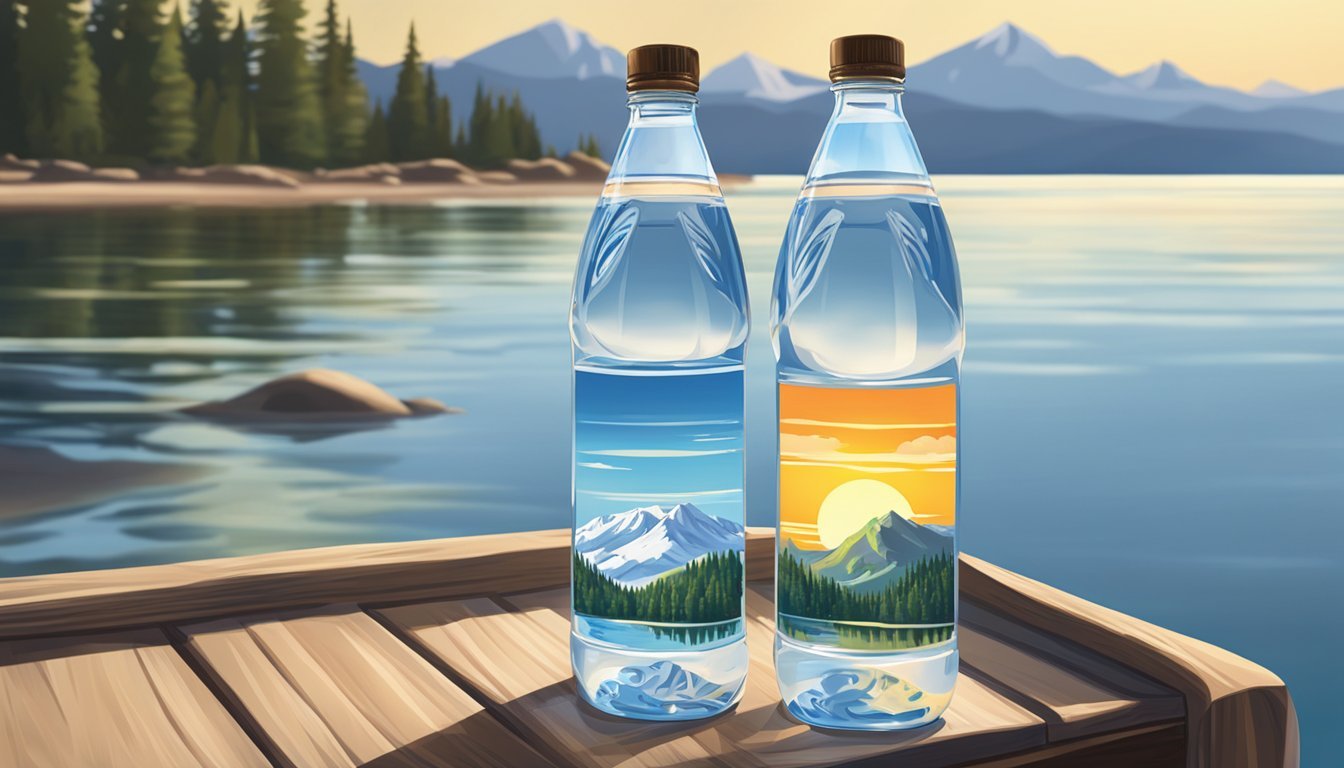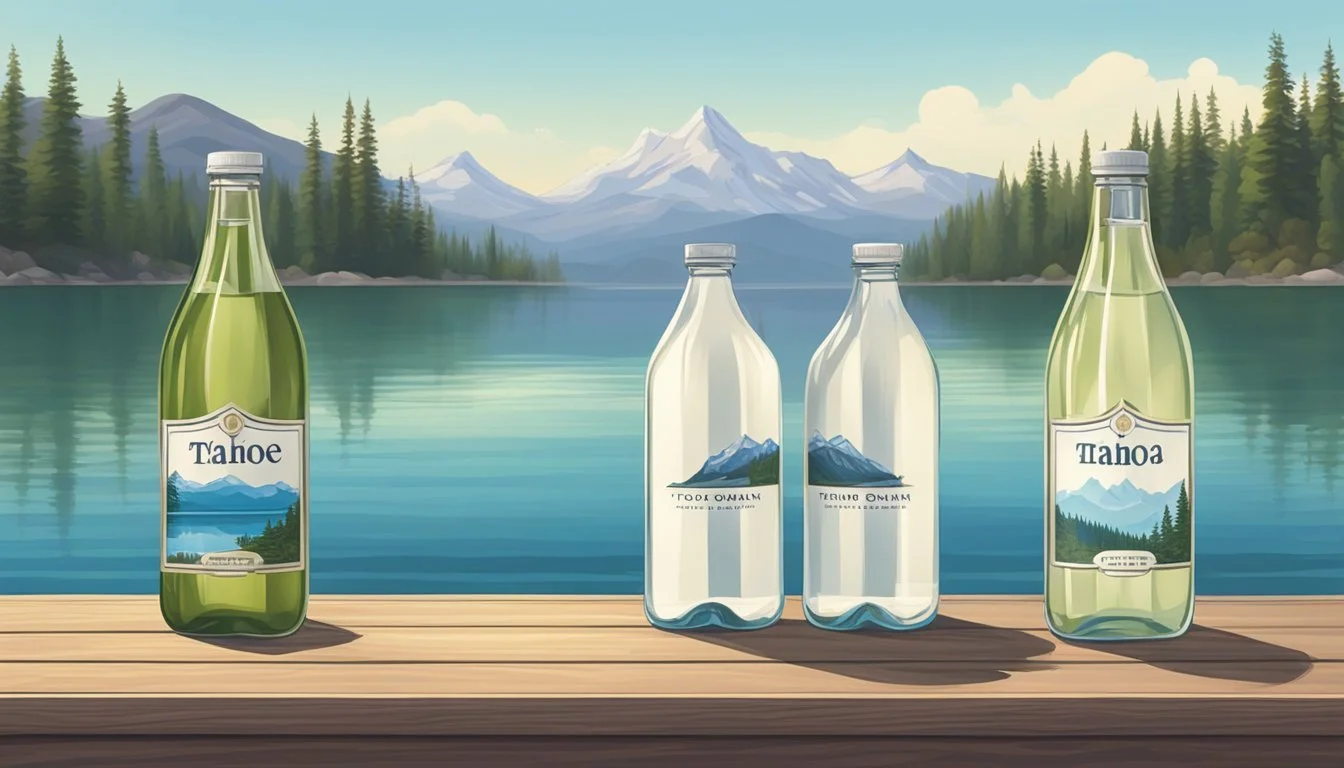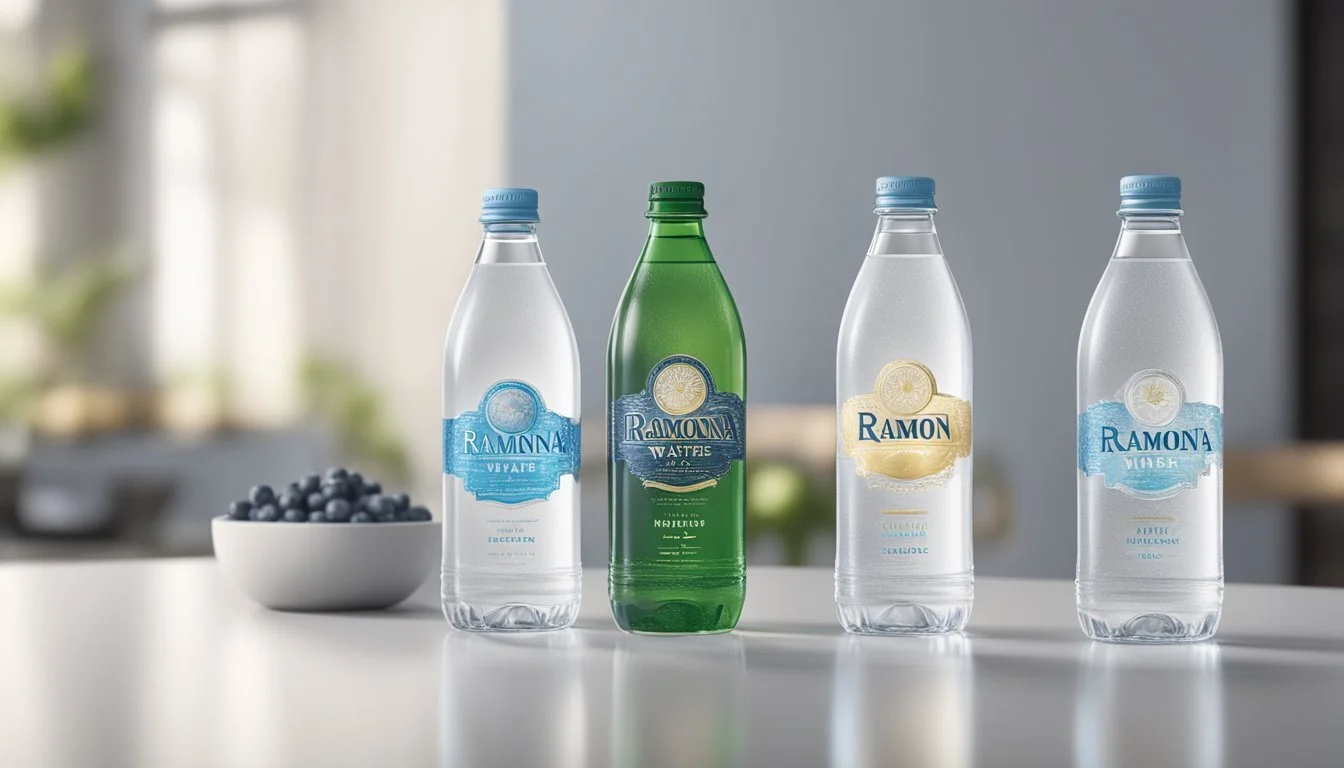Tahoe vs. Ramona
Which Bottled Water Offers Superior Quality?
When choosing between Tahoe and Ramona bottled waters, consumers often look towards taste, sourcing, and price as critical deciding factors. Tahoe water has a unique profile, described as having a slightly baked, petrichor-like flavor that's reminiscent of water on hot asphalt, which may appeal to those who prefer a distinctive taste. Ramona, a California spring water, emphasizes purity and premium sourcing, which contributes to its slightly higher price point of $1 to $3 per bottle.
Ramona tends to be the better option for those seeking high purity and a clean taste, whereas Tahoe stands out for its unique flavor that could cater to a niche preference. Tahoe’s accessibility and general affordability make it a popular choice among many consumers.
Price and availability sometimes tip the scales in favor of Arrowhead over Ramona, but there’s a market for both, depending on what the consumer values more. Readers should consider what they prioritize in their bottled water experience, whether it's the purity and premium nature of Ramona or the distinct and memorable taste offered by Tahoe.
Understanding Bottled Water
When considering bottled water, it is crucial to comprehend its definition, sources, types, and how it compares to tap water. This knowledge helps consumers make informed choices about the water they drink.
Defining Bottled Water
Bottled water is water that has been packaged in sealed containers such as plastic or glass bottles. It can come from various sources and undergo different treatment processes.
Bottled water is commonly available in several varieties:
Natural Spring Water: Sourced from underground springs.
Mineral Water: Contains specific levels of minerals like calcium and magnesium.
Purified Water: Undergoes processes such as distillation or reverse osmosis to remove impurities.
Alkaline Water: Has a higher pH level, often marketed for its potential health benefits.
Source and Types of Bottled Water
The source of bottled water significantly impacts its taste and mineral content. Natural spring water comes from underground sources and is collected at the spring or via a borehole.
Mineral water must have a consistent mineral composition and often originates from protected underground reservoirs. Purified water, meanwhile, begins as tap water but undergoes extensive treatment to remove contaminants.
There are also specialty waters, such as Alkaline Water, with a pH between 8 and 9, which some believe offers health benefits. Additionally, Spring Water is often valued for its naturally occurring minerals.
Bottled Water vs. Tap Water
Tap water is provided by municipal systems and must meet stringent safety regulations. It is treated to eliminate harmful bacteria and contaminants. However, taste and mineral content can vary depending on local geology and treatment processes.
Bottled water, while also regulated, often undergoes additional purification steps and may contain specific mineral compositions, catering to consumer preferences.
Comparing bottled water to tap water, bottled options can provide consistent taste and purity. Some prefer it for its convenience and portability. Others opt for tap water, finding it a more sustainable and cost-effective choice.
Understanding these distinctions can help individuals choose the best water option for their needs.
Health and Hydration
Tahoe and Ramona offer unique benefits that cater to different health and hydration needs. Key factors include hydration efficacy, electrolyte content, pH levels, and water quality.
Hydration and Electrolytes
Proper hydration is critical for health, and both Tahoe and Ramona aim to meet this need effectively.
Tahoe water is sourced from pristine environments, ensuring high purity. It doesn’t list significant electrolyte additions, focusing instead on pure water for straightforward hydration. This makes it a good choice for consumers seeking clean, uncomplicated hydration.
Ramona emphasizes purity and often includes natural electrolytes like magnesium and calcium, which enhance hydration by replenishing essential minerals lost through sweat. This can be particularly beneficial for athletes or those needing higher electrolyte intake.
While Tahoe provides excellent hydration through purity, Ramona’s electrolyte profile offers added health benefits, making it a potentially better option for comprehensive hydration needs.
PH Levels and Water Quality
The pH level of water plays a role in its taste and potential health effects.
Tahoe water has a neutral to slightly alkaline pH, averaging around 7-8. This neutral pH means it’s unlikely to affect the body’s natural balance, making it suitable for regular consumption without any adverse effects on health.
Ramona takes pride in its high water quality, often featuring a naturally alkaline pH, usually around 8-9. Alkaline water is believed to help balance acidity in the body, although the body regulates pH efficiently on its own.
Water quality in Ramona is maintained through stringent purification processes, ensuring high safety standards. Tahoe’s clean source also ensures excellent water quality, free from contaminants and with a pleasant taste.
In terms of pH and overall water quality, both brands stand out, but Ramona’s slight edge in alkalinity might appeal to consumers interested in alkaline water benefits.
Analyzing Tahoe and Ramona Brands
Tahoe and Ramona are popular premium bottled water brands known for their distinct mineral contents and purification processes. This section explores the history, production methods, and taste profiles of both brands.
Brand History and Origin
Tahoe is sourced from the pristine Tahoe Basin. This region is known for its clean environment and natural beauty. The brand aims to capture this purity in every bottle.
Ramona is California-based, drawing from local springs renowned for their purity. This brand focuses on premium sourcing and maintaining high standards of water quality.
Both brands have built reputations for offering high-quality, refreshing water, but they differ significantly in their origins and sourcing methods.
Production and Purification Process
Tahoe uses a detailed reverse osmosis system followed by additional filtration to ensure purity. This method removes impurities while retaining essential minerals. The careful process ensures the final product is both pure and safe to drink.
Ramona also emphasizes purity, employing advanced purification technologies. This includes multiple filtration stages to remove contaminants without compromising the natural minerals.
Both brands pride themselves on their rigorous processes, which result in water that is not only safe but also retains key minerals essential for a balanced taste.
Minerals and Taste Profile
Tahoe has a distinct mineral profile. The water typically contains moderate levels of potassium and a low sodium content, delivering a clean, refreshing taste. The magnesium and calcium contents vary, which affects its smooth taste.
Ramona boasts a high level of purity with a distinct taste that many consumers find appealing. The mineral content includes noticeable levels of calcium and magnesium, contributing to its smooth, pure flavor.
While both hold unique taste profiles influenced by their mineral contents, both brands ensure their water remains refreshing and balanced.
Comparative Analysis
Tahoe and Ramona bottled water both offer unique qualities that cater to different preferences, from pH balance and mineral content to flavor and mouthfeel. Each brand's distinctive characteristics play a vital role in determining which might be better for you.
PH Balance and Mineral Content
Tahoe is known for its clean water sourced from the pristine Tahoe Basin. Its mineral content includes moderate potassium and low sodium, contributing to its balanced profile. The exact pH level of Tahoe water can vary but generally offers a neutral to slightly alkaline range.
Ramona, on the other hand, emphasizes sustainability using recycled plastic for its bottles. Though it doesn't focus heavily on specific mineral contents, users note its purity aligns with premium standards. Ramona's pH levels usually fall within the optimal drinking range, supporting a balanced mineral intake.
For reference, here’s a comparison table of common bottled water brands:
Brand pH Level Sodium (mg/L) Potassium (mg/L) Tahoe ~7-8 Low Moderate Ramona ~7-8.5 Varies Moderate Essentia 9.5 5 0.2 Aquafina 6-7 4 0 Dasani 5-7 10 0
Flavor and Mouthfeel
Tahoe water has a light, clean flavor, often highlighted by those who prefer a refreshing aftertaste. Some describe its mouthfeel as mildly velvety with a neutral taste that doesn't overpower the palate.
Ramona is frequently praised for its crisp flavor, making it a popular choice among premium bottled water enthusiasts. Its mouthfeel is described as smooth and satisfying, catering to those who appreciate a more delicate and nuanced drinking experience.
Taste preferences are subjective, but based on feedback, both Tahoe and Ramona offer their own distinct advantages. Tahoe for its pristine source and balanced mineral content, and Ramona for its commitment to sustainability and refreshing taste. Each brand provides an experience that is both unique and appealing to a broad range of consumers.
Consumer Considerations
When choosing between Tahoe and Ramona bottled water, consumers must weigh various factors including their packaging options and accessibility, as well as the price point and overall value. These elements can significantly influence a buyer's decision.
Packaging and Accessibility
Both Tahoe and Ramona offer convenient packaging suitable for a variety of settings. Tahoe water is often available in sleek glass bottles, which provide a premium feel and are eco-friendly. Ramona, on the other hand, offers both plastic and glass options to cater to different consumer preferences.
Convenience stores and grocery stores widely stock both brands, making them easy to find. Tahoe's refined appearance in glass is appealing for formal events or premium dining experiences, while Ramona's variety in packaging meets everyday hydration needs with more flexibility.
Price Point and Value
The cost of bottled water can be a major deciding factor. Tahoe is typically positioned at a higher price point, reflecting its premium branding and the cost of using glass bottles. This higher price is often justified by its smoother taste and balanced mineral content, appealing to those seeking quality over quantity.
Ramona offers more affordable options with its plastic bottle selections, making it more accessible for daily use. While the glass bottle versions of Ramona may still be pricier, they tend to be less expensive than Tahoe. For budget-conscious consumers, Ramona represents better value without significantly compromising on quality.
Overall, the choice between Tahoe and Ramona will largely depend on individual priorities regarding packaging preferences and budget constraints.
Environmental and Ethical Impact
Tahoe and Ramona's environmental and ethical practices are critical components that can impact consumer choice. Both brands approach sustainability and safe drinking water initiatives in unique ways.
Sustainability Practices
Tahoe emphasizes its commitment to lowering its carbon footprint by using recycled plastic in its bottles and optimizing its logistics network to reduce transportation emissions. The company collaborates with environmental organizations to promote biodiversity and clean water initiatives.
Ramona stands out for its focus on premium sourcing, leveraging sustainable practices such as BPA-free bottles and reduced plastic usage. It has implemented measures to minimize its environmental impact, including supporting eco-friendly packaging solutions and water conservation projects.
Both companies face challenges related to CO2 emissions and plastic waste, but their distinct approaches reflect a broader trend towards sustainability in the bottled water industry.
Safe Drinking Water Initiatives
Tahoe actively supports safe drinking water projects in underserved regions. Partnering with non-profits, the brand invests in building wells and purifying water sources. These efforts align with Tahoe's mission to ensure clean and accessible water for communities in need.
Ramona also contributes to safe drinking water initiatives by funding water purification systems and educational programs on hygiene and sanitation. The company focuses on areas with limited access to clean water, aiming to alleviate water scarcity issues.
These initiatives underscore both brands' commitment to addressing global water challenges while promoting ethical responsibility in their business practices.
Final Remarks on Premium Water Brands
The choice of premium bottled waters like Voss, San Pellegrino, and Acqua Panna often revolves around the drinking experience and the impact of water sommeliers.
The Drinking Experience
Drinking premium water isn’t just about hydration; it's about savoring a clean, crisp, and refreshing taste. San Pellegrino offers a sparkling texture that pairs well with rich foods in fine dining settings. Acqua Panna provides a smooth and neutral flavor, making it a favorite for enhancing subtle cuisine flavors.
Voss is known for its pure and slightly sweet taste, often consumed for its stylish glass bottles. The drinking experience with premium brands usually involves high-quality, clear water that is free of any overpowering mineral or plastic taste, ensuring an enjoyable and luxurious experience.
The Role of a Water Sommelier
A water sommelier plays an essential role in fine dining by recommending the right type of water to complement different dishes. Similar to a wine sommelier, they have a refined palate and deep knowledge of various water sources.
They can guide diners in choosing between still or sparkling, and make specific suggestions such as pairing San Pellegrino with rich pasta dishes or Acqua Panna with delicate seafood. Their expertise ensures that the selected water enhances the dining experience, balancing the flavors and textures of the meal.
In summary, the expertise of water sommeliers and the specific qualities of premium bottled waters contribute significantly to the nuanced and refined enjoyment of these brands.
More About Tahoe
Mountain Valley Spring Water vs Tahoe: Which Bottled Water is Better?
Tahoe vs Richard's Rainwater: Which Bottled Water is Better?
Tahoe vs Whole Foods Italian Still Mineral water: Which Bottled Water is Better?









